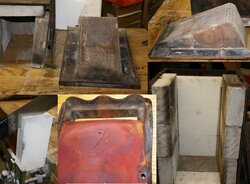calcifer
New Member
Hello again I-rover.
I'll see what I can do about taking some photos.. . The secondary combustion chamber is pretty neat looking when taken apart. Fortunatly, it's getting warmer here in Seattle, and I have lots of time to rebuild this stove properly.
I'll see what I can do about taking some photos.. . The secondary combustion chamber is pretty neat looking when taken apart. Fortunatly, it's getting warmer here in Seattle, and I have lots of time to rebuild this stove properly.


